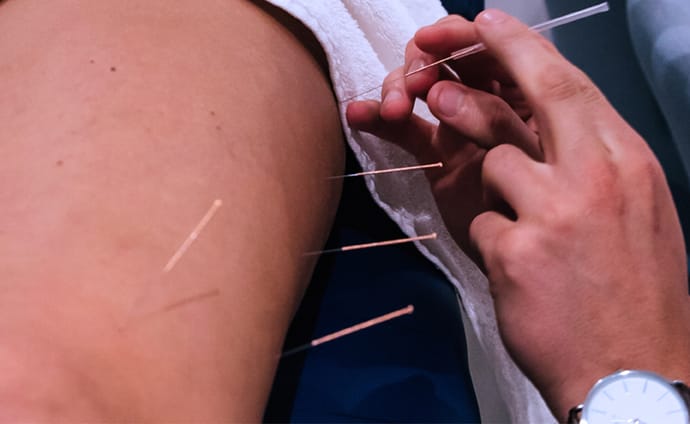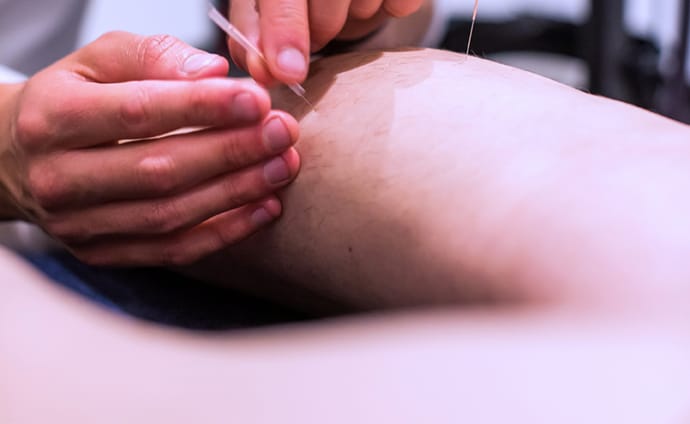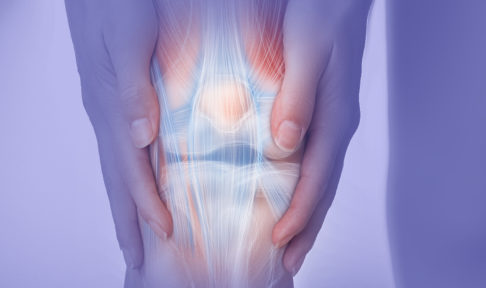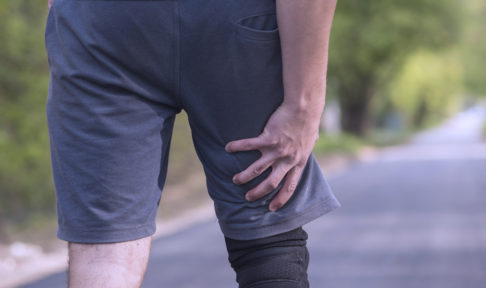Dry needling is a popular physiotherapy treatment used for a wide variety of pain, tension or injuries. It allows a physio to treat deeper layers of a muscle than they would ordinarily be able to reach using massage or manual manipulation.
For sufferers of lower back postural pain, neck pain, migraines, glute and muscle tension, anterior knee pain, post-operative pain and many other conditions, dry needling can provide relief from pain and tension.
But, what exactly is dry needling?
Dry needling, while derived from Chinese acupuncture, is a clinically-proven technique that blends eastern thinking, western medicine and physiology. A qualified physician will insert single-use, pre-sterilised disposable needles of varying widths, lengths and materials into your body, piercing the skin.
Dry needling is commonly confused or used as an interchangeable term with acupuncture, as they both involve the use of fine needles. And while they’re related, they are actually different methodologies entirely.
But don’t worry, you won’t be treated like a pin cushion! The needles are placed into scientifically-determined spots, technically called myofascial trigger points, which are essentially knots in your muscle. A knot occurs when a group of muscle fibres have shortened as they’ve been activated, such as when you’re performing intense exercise, but have not been able to lengthen back to their normal, relaxed state afterwards. This can manifest as anything from tightness or soreness in that muscle, through to referred pain in another area of the body caused by the initial knot.
Dry needling is commonly confused or used as an interchangeable term with acupuncture, as they both involve the use of fine needles. And while they’re related, they are actually different methodologies entirely (stay tuned for more on that later!).

How do physios use dry needling to relieve pain?
Once inserted into the myofascial trigger points, the needles are normally left in position for between 10 and 15 minutes (at which time you’ll be sitting or lying down comfortably in your treatment room). During this time, the needle’s presence will stimulate the sensory nerves under your skin, which causes your body to release pain-relieving chemicals like endorphins and oxygen, which flush away additional acidic chemicals. But not only this, the needles will also encourage the contracted muscle fibres to relax, releasing tension and reducing pain.
Because of Spectrum’s unique 360 treatment approach, dry needling is normally prescribed as part of your comprehensive treatment plan, combined with other treatment modalities. However, it is possible to receive dry needling as a stand-alone therapy too.
One of Spectrum’s lead physios, Rob Foyster, gained a specialised qualification in dry needling in 2016, so this brings additional expertise to our highly skilled team of professionals.
So, how is dry needling different from acupuncture?
While dry needling is a relatively modern treatment, based on mechanics and a western medical understanding of the biology of our muscles, acupuncture is an ancient Eastern medicine that has been around for thousands of years.
Instead of a focus on myofascial trigger points, acupuncture is based on the idea that our bodies are made up of energy. Chi is a healing energy and if your chi is blocked, it can cause tension or pain in the body. An acupuncture needle is inserted with the intention of removing these blockages and to get the healing energy moving again. While acupuncture is often used by qualified practitioners to treat similar conditions that a physio would treat with dry needling, it is also sometimes used to treat mental illnesses like depression.
So, while they both utilise the insertion of fine needles into affected muscles, the fundamental premise behind the two types of needling treatments differs significantly.

How long do the benefits of dry needling last?
How frequently you will require dry needling and how long the effects last will entirely depend on your individual condition. In some cases, a single treatment of dry needling will do the trick and relief will be felt in the first day or two after treatment. But if you’re suffering from chronic pain, you may need multiple weekly sessions before you notice a marked, long-term improvement.
Are you experiencing postural, neck or muscle pain that you think could be improved using dry needling?
No matter what condition or injury you’re suffering from, Spectrum’s wide range of clinically-proven treatments means we can combine different therapies within the one session at no extra cost, reducing pain and improving your health holistically.
Get in touch with us today to book in an assessment and begin your journey to a pain-free life.



